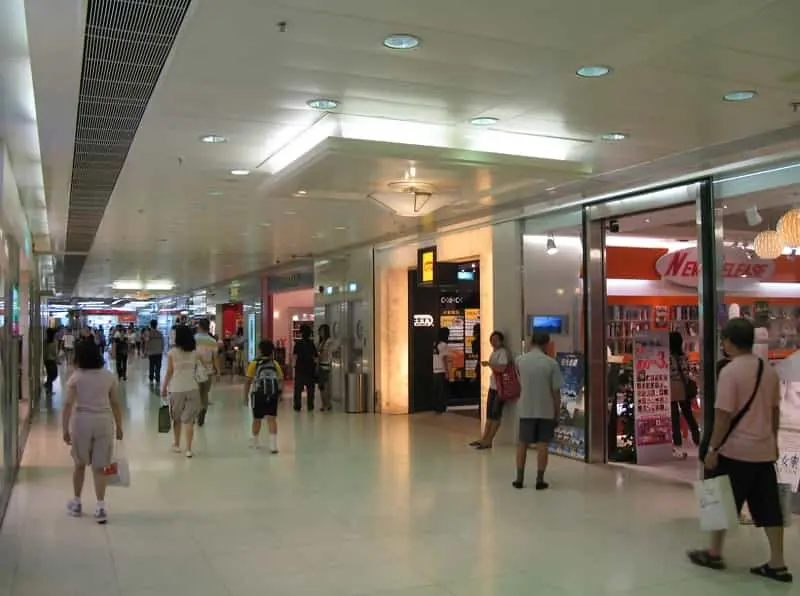Table of Contents

The average annual loss is 600,000, which is equivalent to the annual income of a middle-class family.
The Hong Kong property market is undergoing an unprecedented reconstruction of value. The myth that was once regarded as "only rising and never falling" was completely shattered in the spring of 2024. From luxury homes in Mid-Levels of Hong Kong Island to entry-level properties in the New Territories, from private housing estates to the Home Ownership Scheme (HOS) market, a storm of asset shrinkage is unfolding across the city. The latest transaction data shows that in just three years, the evaporation of more than 10 million Hong Kong dollars in book value has become the norm. The world's most expensive real estate market is undergoing its most severe test since the SARS crisis in 2003.
1. The core of the event: the data impact behind the 6.5 million transaction
- Basic trading information
- Property target: Tseung Kwan OEast Point CityTwo-bedroom unit, with a saleable area of approximately 441 square feet (based on common apartment types)
- Transaction price: HK$6.5 million, a book loss of HK$1.8 million (a decrease of 21.7%) compared to the purchase price of HK$8.3 million in 2020
- Holding period: about 3 years and 4 months (assuming purchase in mid-2020 and sale at the end of 2023)
- Additional costs: If the stamp duty (about 3.75%), commission and interest expenses are taken into account, the actual loss may be close to 2.5 million
- Market price analysis
- Recent transactions in the same housing estate: The transaction price of two-bedroom units in East Point City in November 2023 ranged from 6.8 million to 7.2 million. This case is about 5%-10% lower than the average price
- Regional comparison: The recent transaction price of similar units in Tseung Kwan O Center is about HK$6.6 million to HK$7 million, indicating that the decline of East Point City has not deviated significantly from the market
- Historical peak review: In 2018, the same apartment type reached 9 million, and the current price has fallen by 28% from the high level, reflecting the long-term investment risks
2. In-depth analysis of the causes of losses: macro and micro interweaving
- Macroeconomic level: double squeeze from policy and economy
- Interest rate surge impact: Under the Fed's interest rate hike cycle, Hong Kong's prime rate (P rate) will rise from 5% in 2020 to 6.5% in 2023, and the monthly payment pressure will increase by 30%
- Talent loss risk: The net outflow of population in 2022-2023 will exceed 110,000, and the potential demand for housing will shrink. According to the data of the Rating and Valuation Department, the rental index of Tseung Kwan O fell by 9% during the same period.
- Supply boom: more than 4,000 new units are expected to be built in Tseung Kwan O South in the next three years, and the imbalance between supply and demand will intensify the price war
- Case specificity: The owner’s financial chain was broken
- High leverage risk: If you bought a NT$8.3 million unit with an 80% mortgage, the current book value has fallen below the down payment (NT$1.66 million), triggering pressure on the bank to recover the difference
- Signs of panic selling: 8.5% discount to bank valuation (average valuation of two-bedroom units in East Point City in November 2023: 7.1 million), reflecting owners’ eagerness to cash out
- Holding cost black hole: mortgage interest, management fees and maintenance expenses, the estimated annual holding cost is more than 150,000, and long-term holding losses may continue to expand
3. Data Perspective: Structural Changes in the Tseung Kwan O Property Market
- Volume-price divergence warning
Indicators 2021 2022 2023 (first 11 months)
Average price per square foot (HKD) 16,800 15,200 13,900
Trading volume (units) 1,250 890 680
Average days on the market: 45, 78, 112 (Data source: Centaline Property Agency Tseung Kwan O Branch) Interpretation: Prices and volumes are falling, and the transaction cycle is lengthening. The market has entered a buyer-dominated stage.- Weakened product competitiveness
- New housing estates: New projects in Haiyin Manor and Kangcheng District use smart home and club facilities to divert customers. Two-bedroom units are in excess: the supply of two-bedroom units in the district accounts for 45%, but the proportion of newly married families has fallen for three consecutive years to 18%. The transportation premium has faded: the Tseung Kwan O line is saturated, the halo of the subway-covered properties has weakened, and commuters have turned to the Tuen Ma Line.
IV. Expert opinion: Rules for survival in the cold winter
- "The number of negative assets has exceeded 12,000. If the US interest rate remains high until 2025, the housing price may drop by 10%-15%." Real estate agency strategy Centaline Property Regional Sales Director Li Yuxiang suggested: "Owners should take the initiative to provide 2%-3% commission incentives for agents, and accept the "rent first and then sell" model to ease the pressure of payment." Legal industry reminder lawyer Huang Guoen analyzed: "If the transaction price is significantly lower than the market price, the creditor bank may cite Section 60 of the Property Conveyancing and Property Ordinance to claim the difference."
Cross-region eclipse chart (shocking comparison table)
| area | Typical Cases | Holding time | Book loss | Average daily evaporation amount |
|---|---|---|---|---|
| Hong Kong Island Luxury Homes | Yuyuan three-bedroom apartment reduced by 1 million | Undisclosed | Not eclipsed | – |
| Kowloon Nano Building | AVA 61 lost 600,000 in five years | 5 years | 18.3% | 328 yuan |
| New Territories Entry | Huiqiao open depreciation 46% | 8 years | 2.39 million | 819 yuan |
| Outlying Islands Home Ownership Scheme | Yutaiyuan public housing households buy homes at NT$1.6 million | Undisclosed | Not eclipsed | – |

V. Future projections: Risks and opportunities under three scenarios Scenario 1: Delayed interest rate turning point (probability 45%)
- The Federal Reserve will maintain high interest rates in 2024, Hong Kong property prices will fall by another 8%-12%, and two-bedroom apartments in East Harbour City will drop to the range of 5.8 million to 6 million. Trigger conditions: US core CPI sticks above 3.5%
- The government relaxes the mortgage ratio or reduces stamp duty, stimulating the transaction volume to rebound by 20%, but the price rebound is limited to 5%. Risk point: The reduction of fiscal reserves restricts the rescue efforts.
- The global recession dragged down Hong Kong's GDP, unemployment rate rose above 5%, and property prices fell by more than 20%. Black swan indicators: China's mainland real estate companies' debt crisis worsened
VI. Rational Decision-making Guide: The Offensive and Defensive Battle between Owners and Buyers for Loss-Making Owners
- Stop bleeding strategy: Transfer mortgage to small and medium-sized banks to strive for valuation increase 5%-8% Sign a "sell and rent back" agreement to retain the right of residence Sub-rent a room to subsidize the monthly payment, estimated annual income increase of 60,000-80,000
- Bottom-fishing rules: Target urgent sales with bank valuations below 15% off. Require the seller to bear part of the stamp duty or legal fees. Give priority to low-rise units, which are more resistant to price drops (the price drop of low-rise units in Tseung Kwan O will be 3% less than that of high-rise units in 2023)
The erosion of Donggang City is by no means an isolated incident, but an inevitable metabolism under the triple changes of interest rate normalization, population structure transformation and housing policy shift. When the myth of "bricks will definitely increase in price" is shattered, the market is reshaping the value benchmark in a painful way. The next two years will be the ultimate test of capital strength and risk awareness. Only investors who break free from emotional shackles and rationally calculate holding costs and opportunity costs can find opportunities in the cycle.
Further reading:
- Shocking scam in Beverly Hill, Tai Po! The con man "Li Weiye" pretended to be a philanthropist and disappeared with 400 million! Cheating Hong Kong stars out of tens of millions of Hong Kong dollars?
- Alibaba founder Jack Ma may spend HK$1.5 billion to buy a super luxury house in Hong Kong, setting two new records in the global real estate market
- The first second-hand loss occurred in the new development "Xingkai. Embankment" in Shatin and Fotan, causing the owner to lose more than 20% and leave the property




